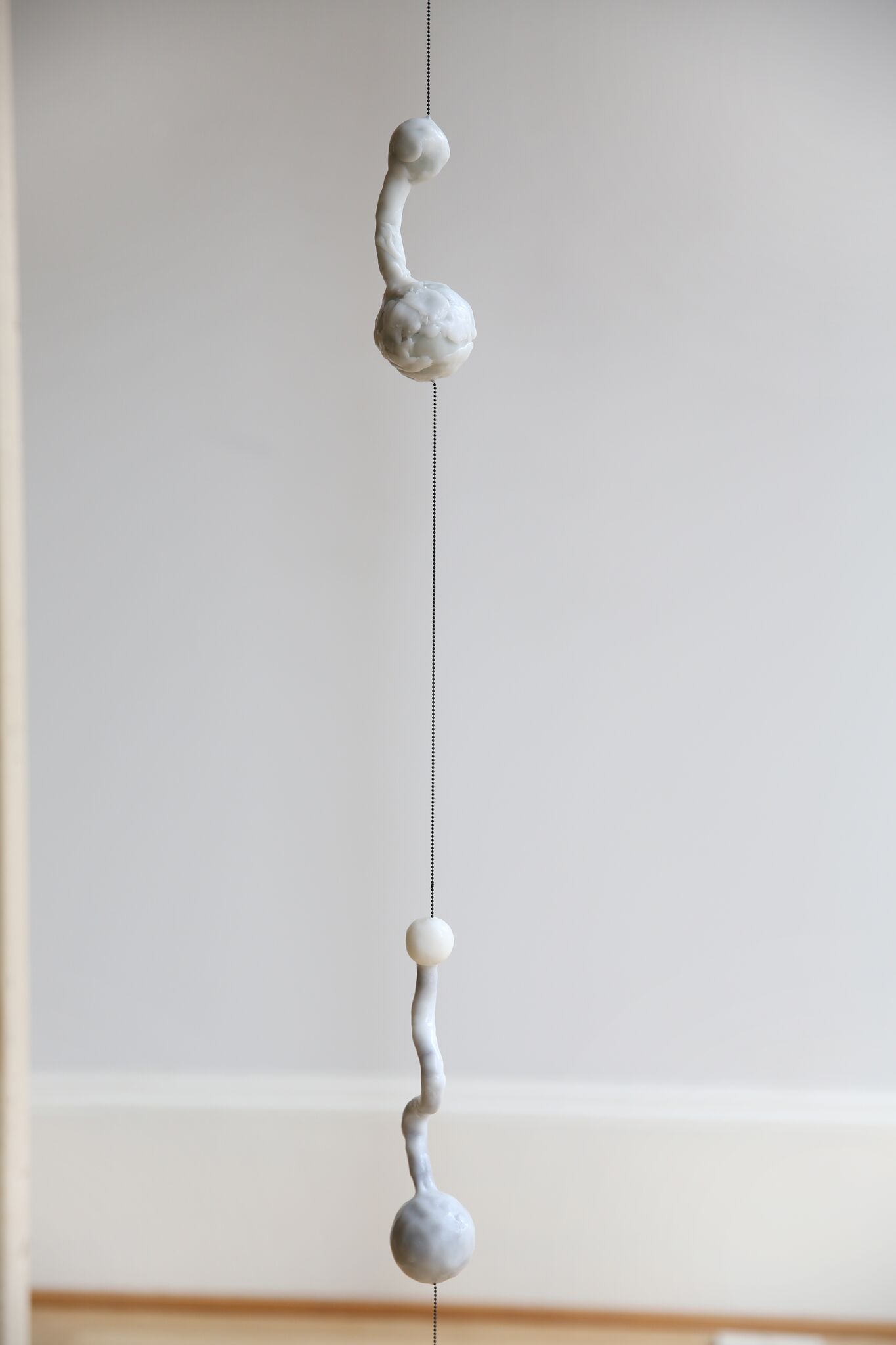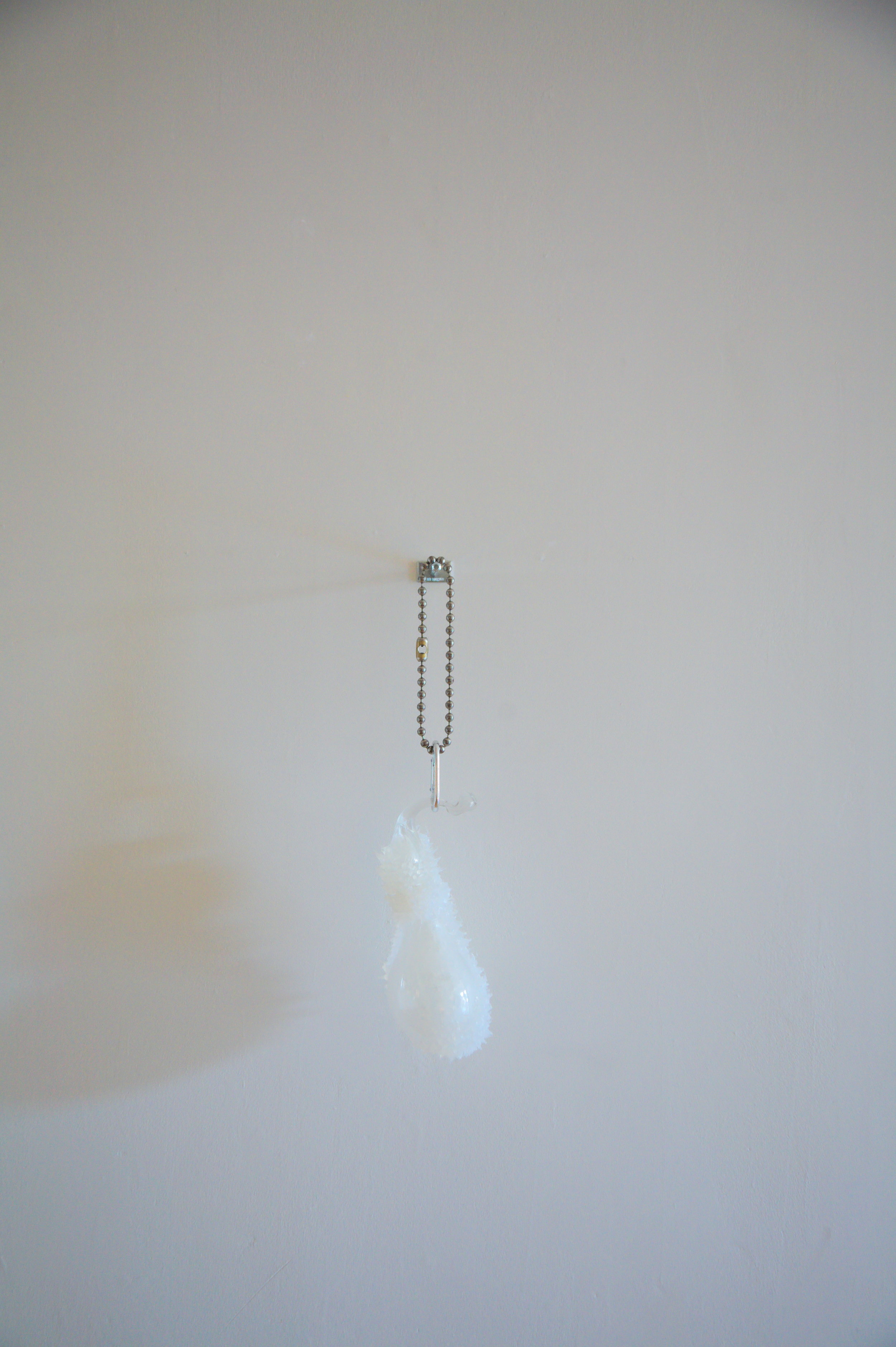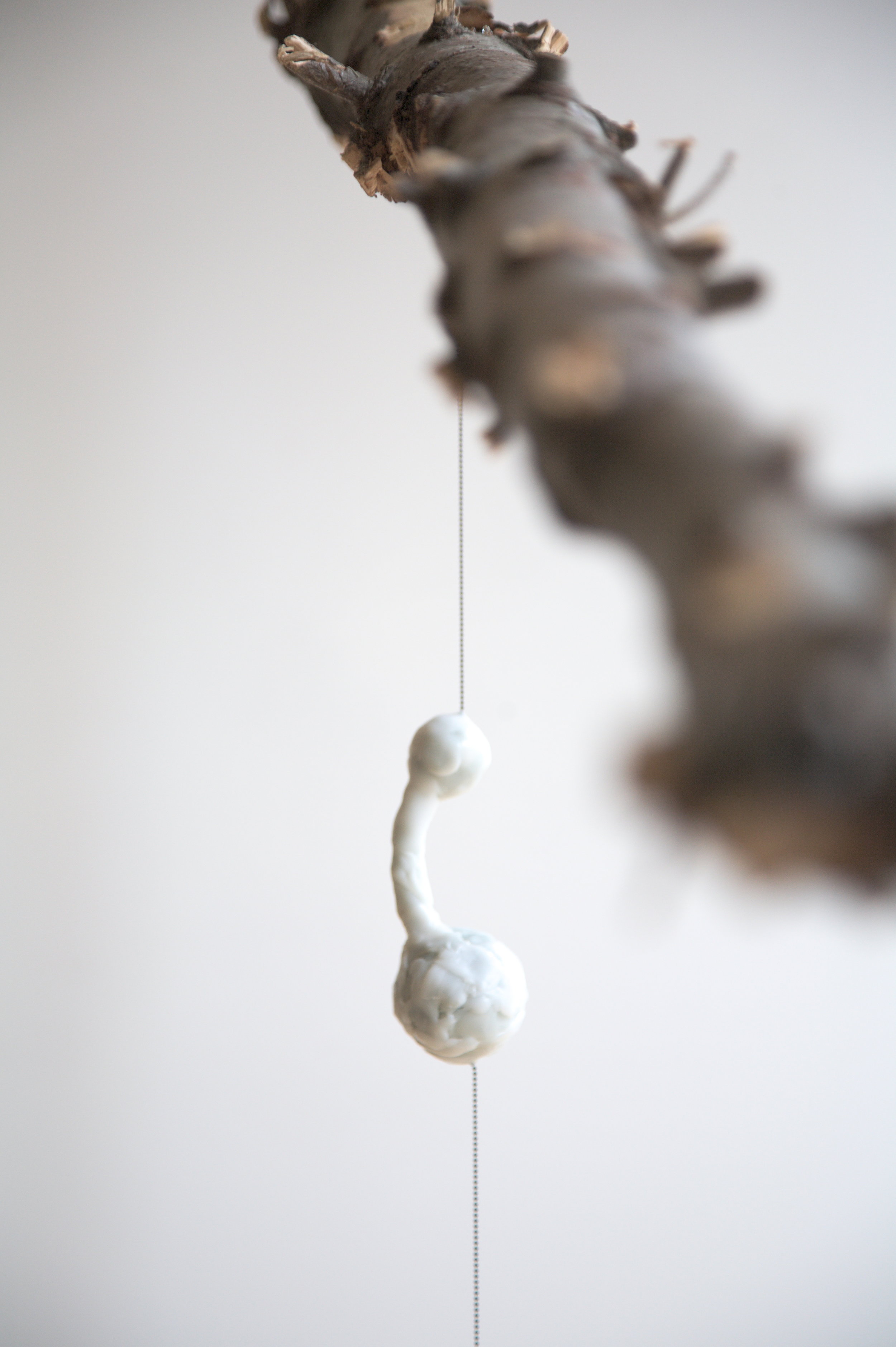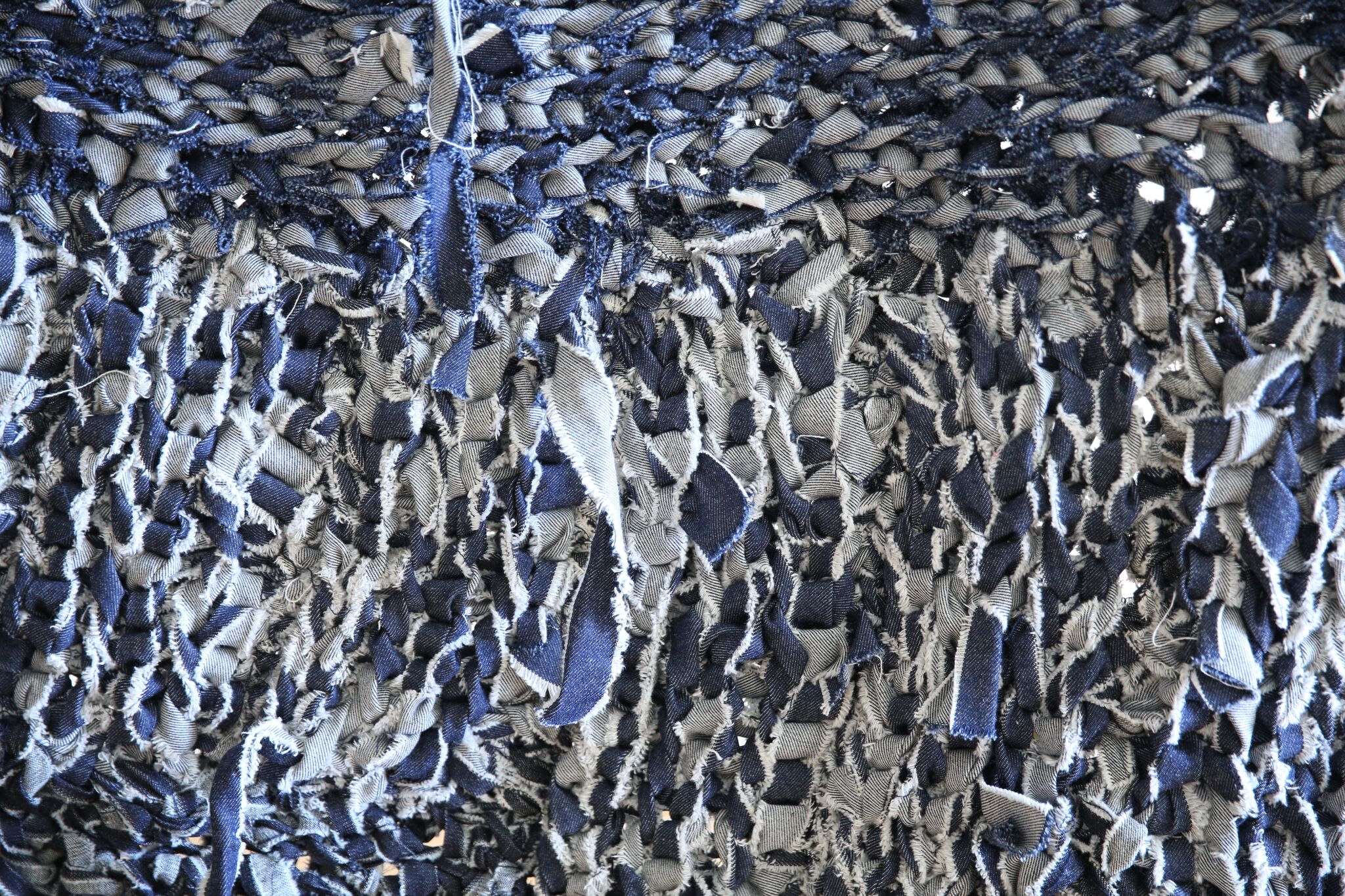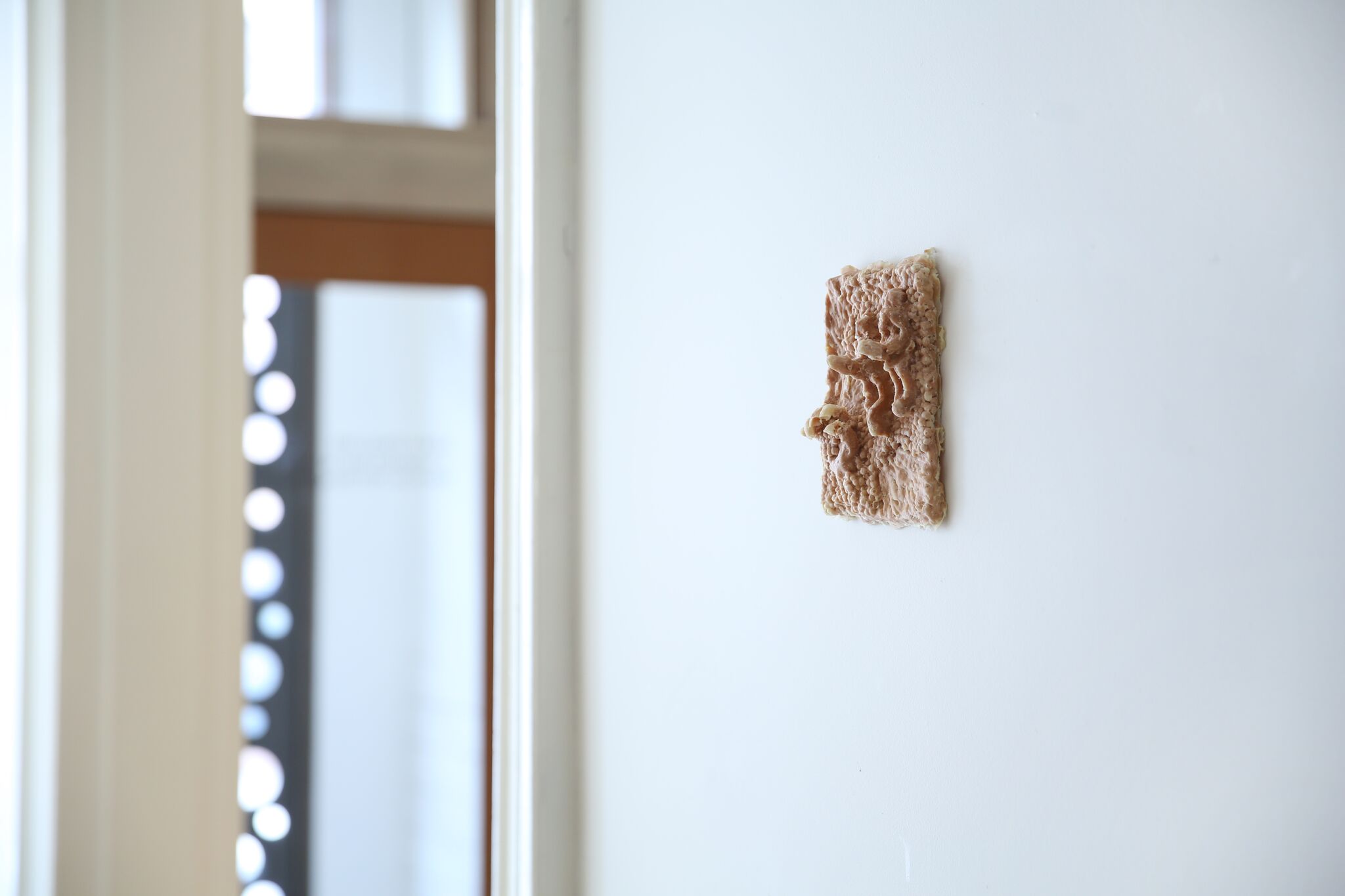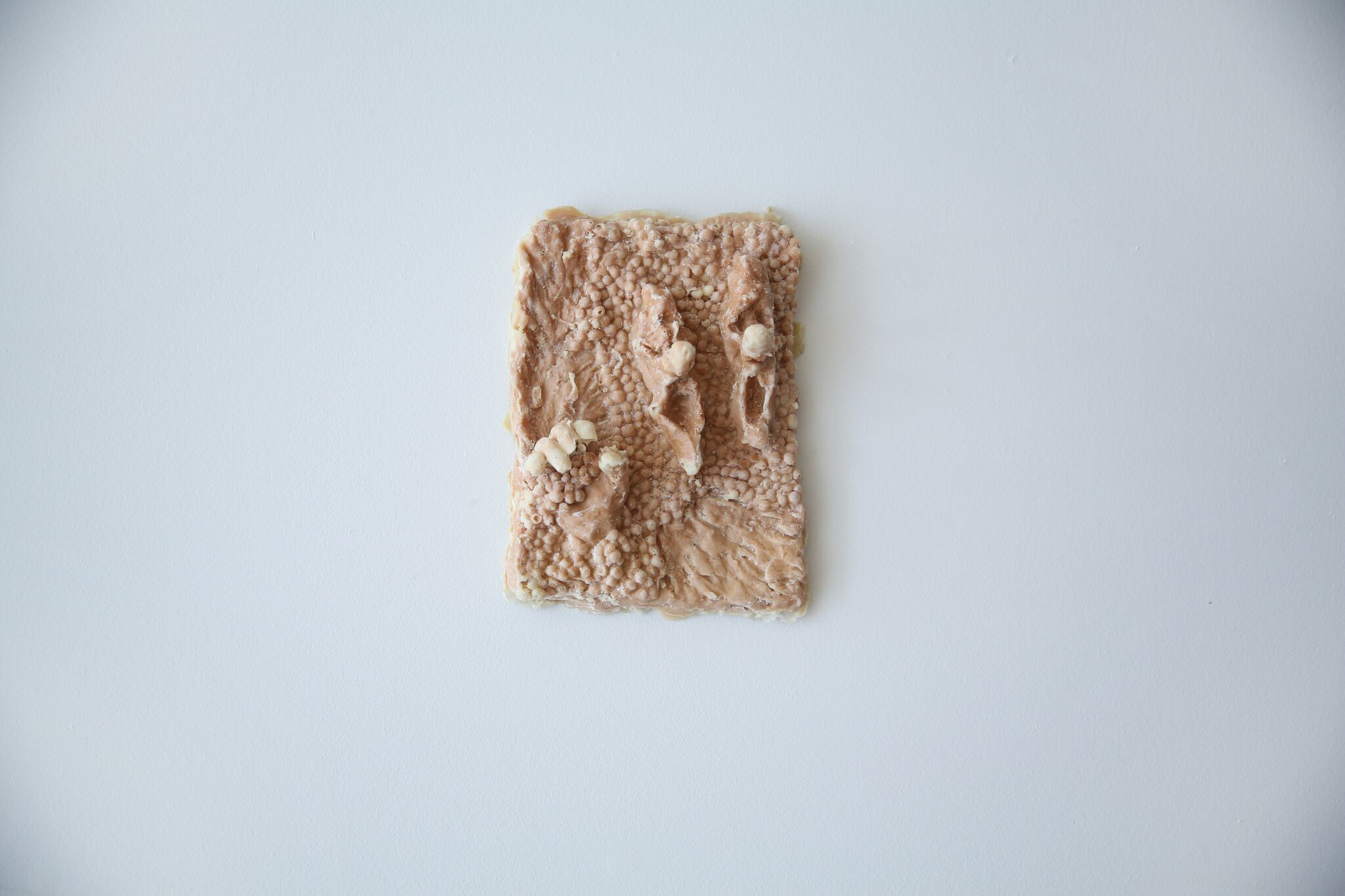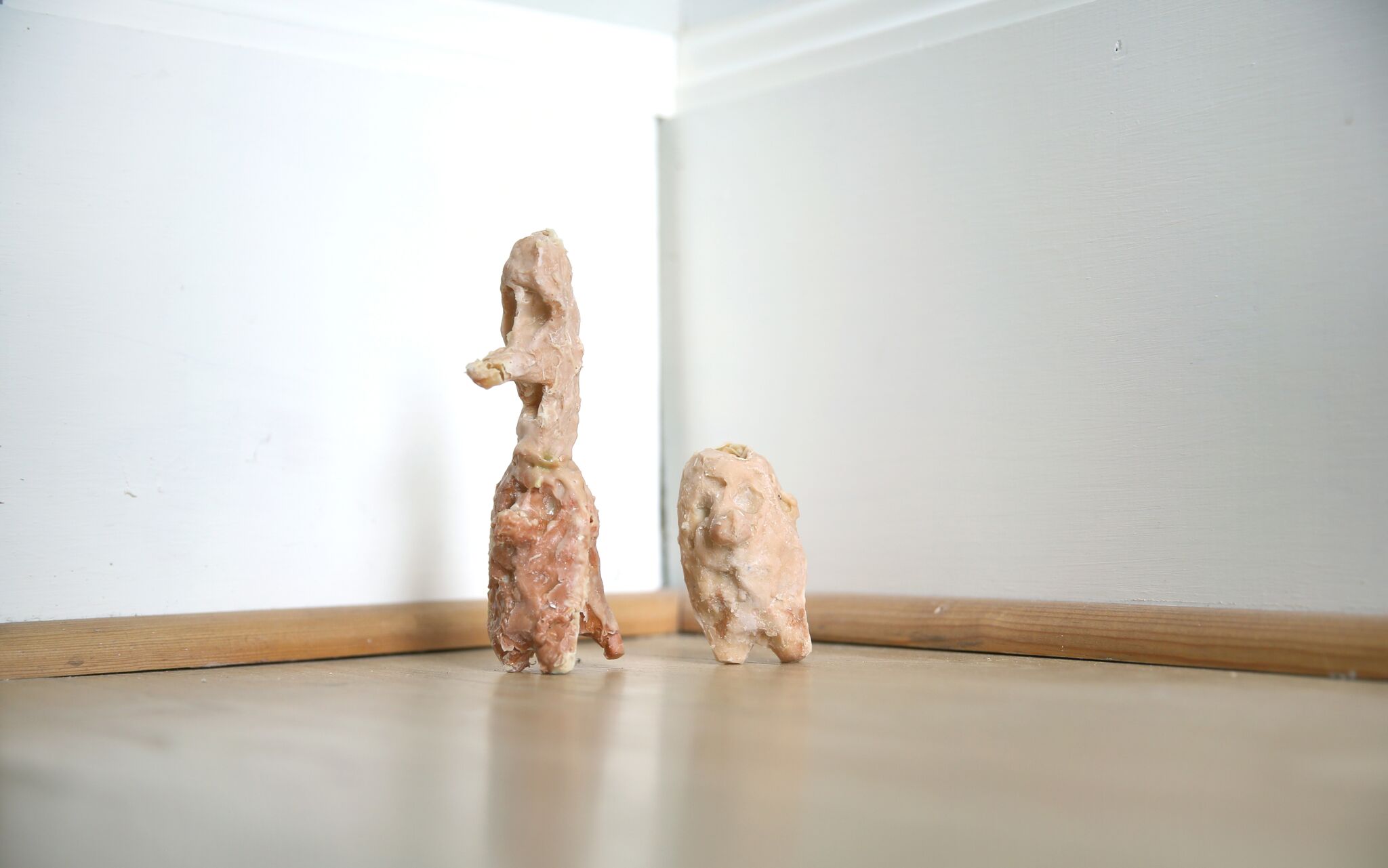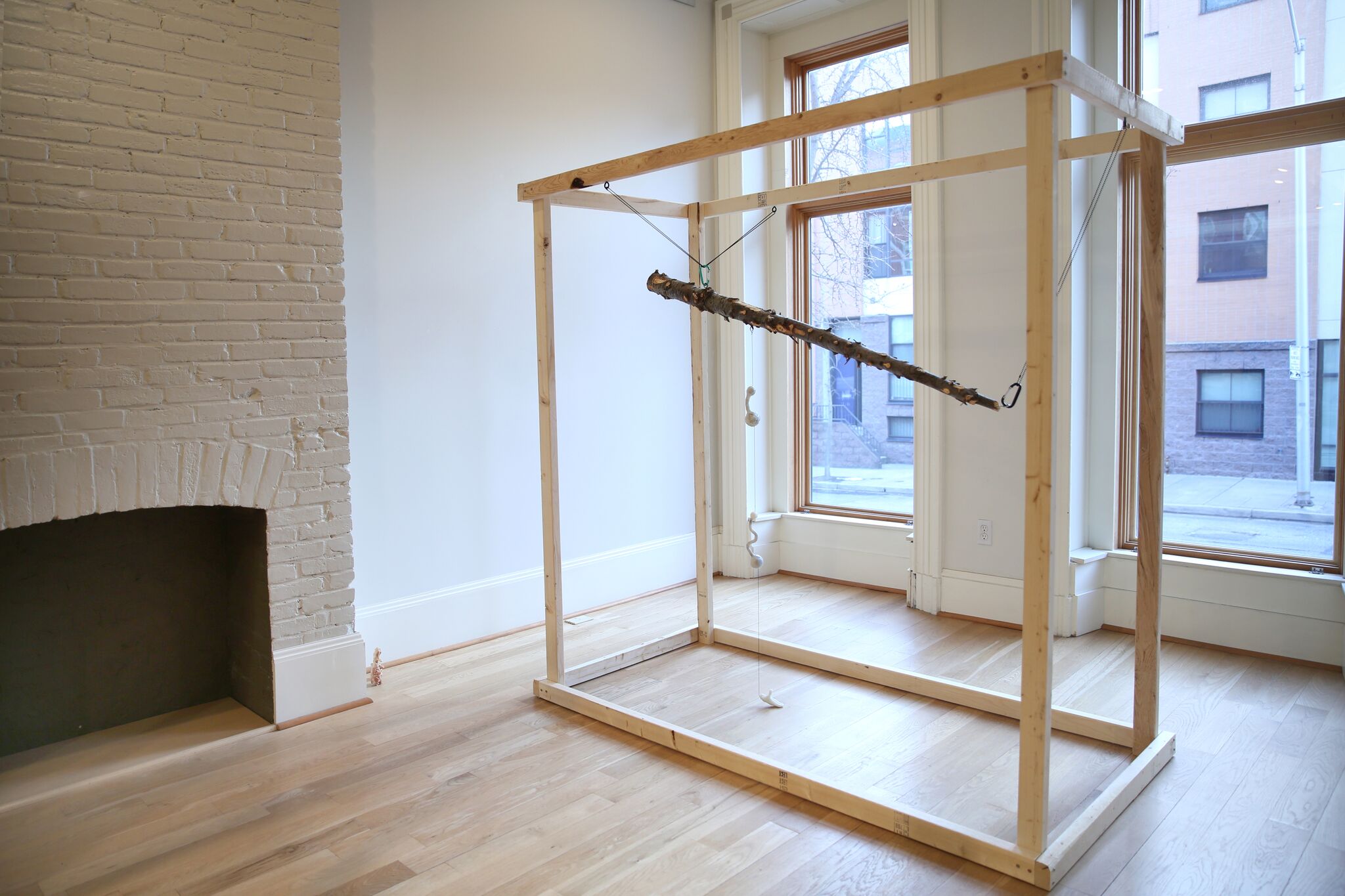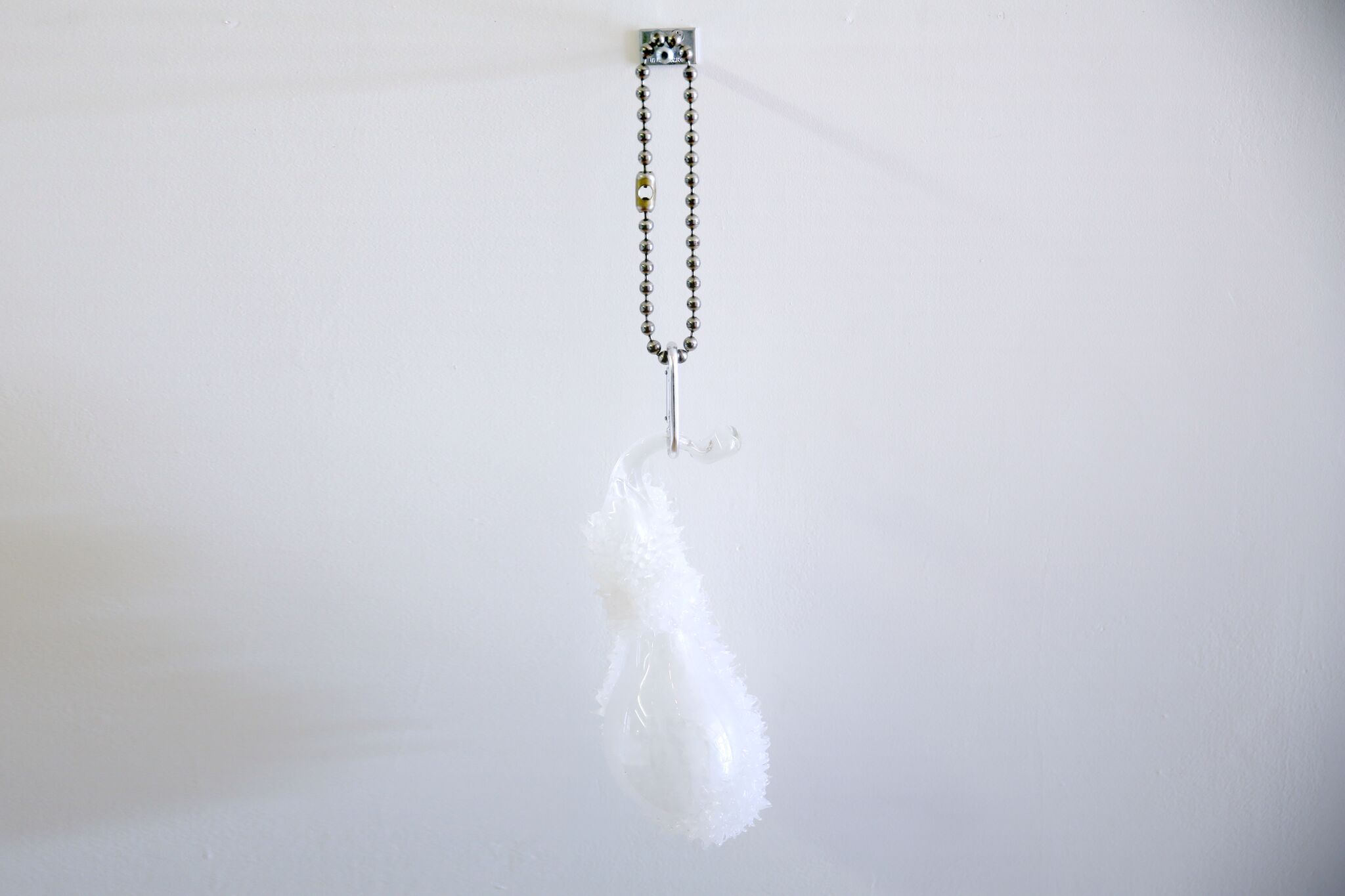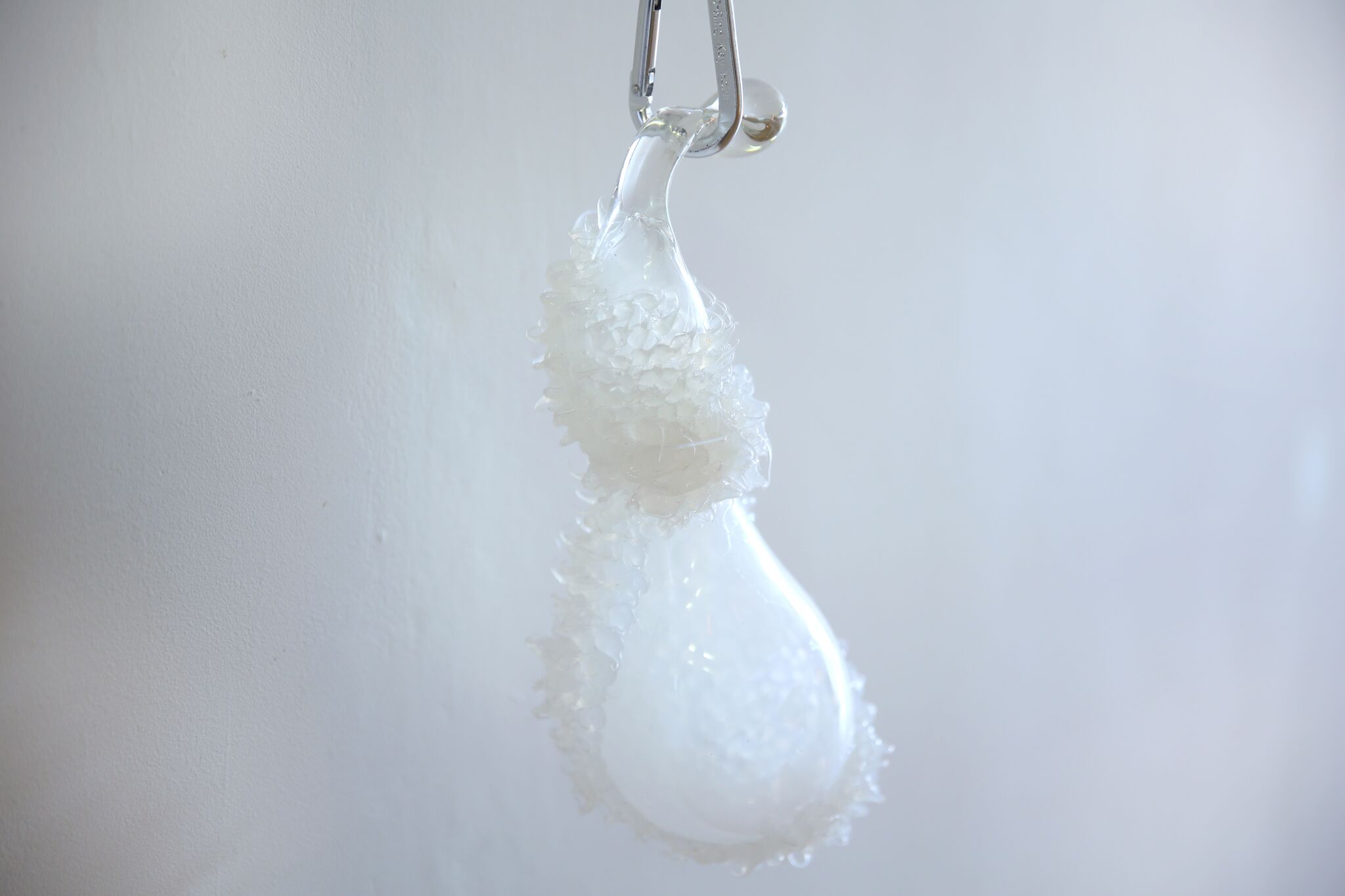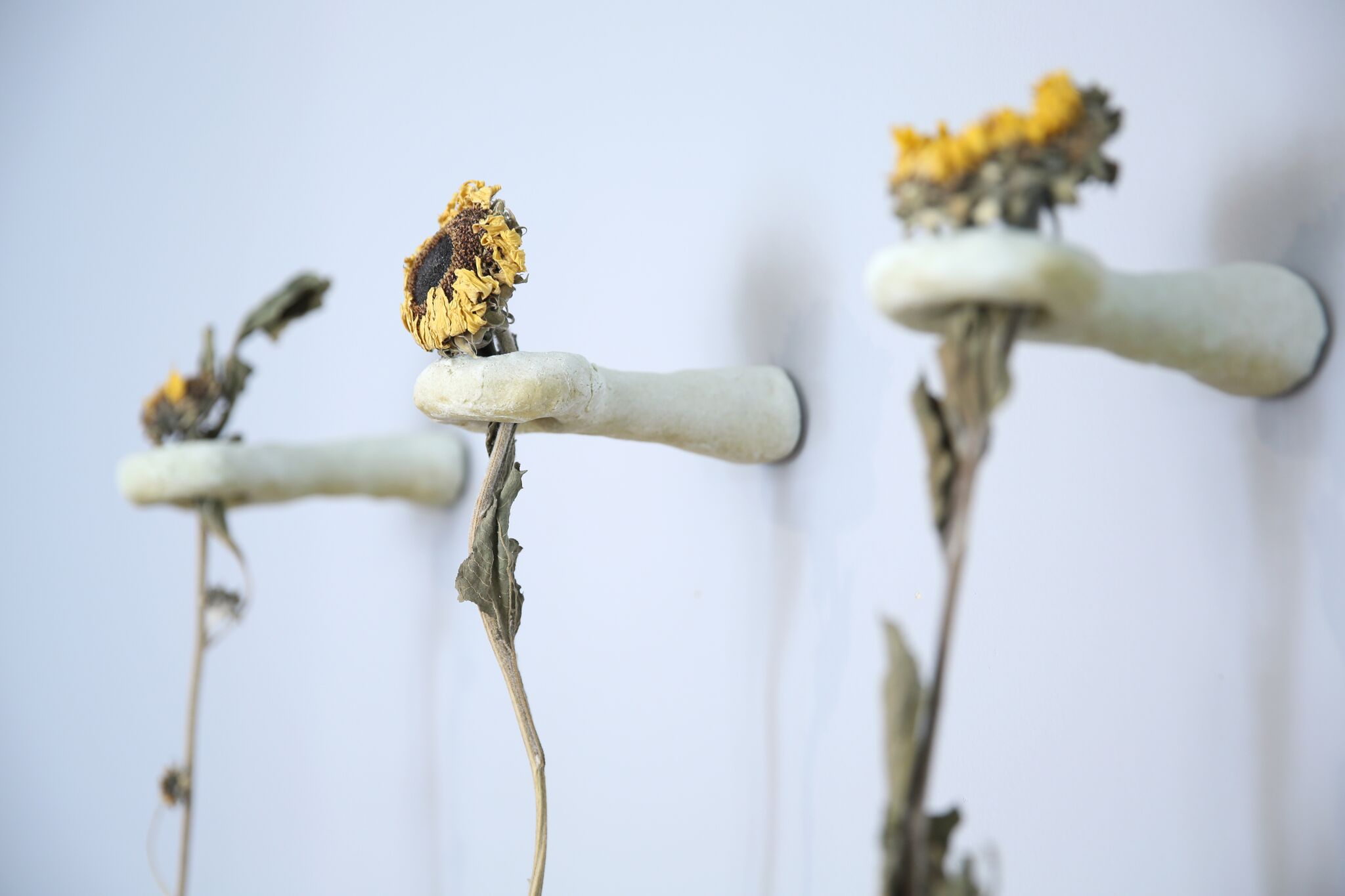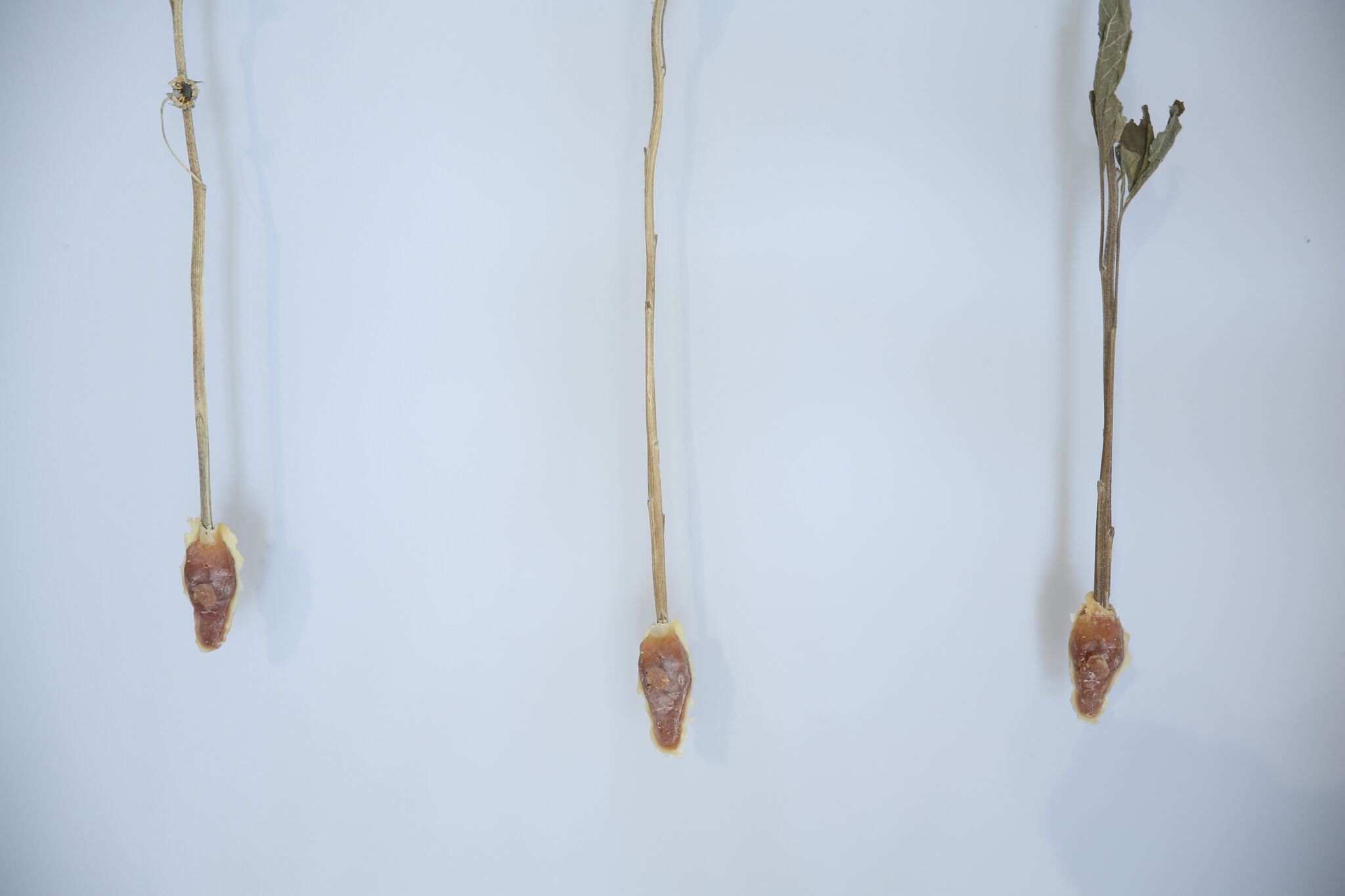SESSA ENGLUND
A Suspended State in Last
Opening Reception: Saturday, March 24 7pm-10pm
March 24, 2018 through April 27, 2018
Guest Spot @ THE REINSTITUTE is proud to present A Suspended State in Last, a solo project by Sessa Englund.
A Suspended State in Last examines the adjournment of art as historical matter. Englund explores ideas surrounding art rituals as a potential parallel oeuvre, subsequently complicating how art relates to the shared material experience. Englund's critique falls on materialism as artistic production; they investigate the relationships between matter and bodies, from the hierarchies of gender to the abject and phobic. The work explores the vitality of substances and addresses how the concepts of inter-materiality and trans-materiality emerge in the hybrid zones of socio-political experimentation.
Much of material history has been reserved for the sake of capital value, such that we have forgotten the importance of art as a shared cultural value. The increasing importance of humanitarian issues, fueled by wealth disparity and the current climate crisis, has challenged our cultural Institutions into doing more than simply represent the change that art embodies.
It should be the role of our cultural institutions to be willing actors and agents for expanded notions of time, space, process, and participation; not to rely on the antiquities of the past to reinforce the vitality of institutional connoisseurship. The allure of material history as memory causes an inability to anticipate socio-political ills, thus impeding the trajectory towards fulfillment of a greater purpose.
Sessa Englund is an artist and curator working across sculptural and time-based mediums, based in NYC and Gothenburg, Sweden. They received their BFA at the School of Art+Design, S.U.N.Y. Purchase, and is a member and founder of Disclaimer Gallery and Cura (Projects).
Notes from the Artist:
Much of my work surrounds the idea of shared memory, through advances of "craft" and "cultural objects." I believe this to be increasingly true in what is happening in my studio right now. The objects that draw my attention all seem to have a connecting thread back into my own past experiences, but engorged, cannibalized versions of themselves. Repeating elements emerge: piercings, "trolls" (These troll faces are made with speed, the less intrusion into the form the better), dead materials such as dried sunflowers (the happiest of flowers if you ask me), I think there is a sense of not nostalgia, but whatever the opposite of nostalgia is (p.s. I looked this up and there dos not seem to be a word for the opposite of nostalgia, which is very interesting). Using autobiographical experiences, I associate and activate the innate socio-political framework for a material. These are bastardized, swollen versions of familiar objects, made unfamiliar, I speak against the failure of effort and finally the humanization process in the fall from grace, the objects all seem to be cut short from their potential.
The use of denim is purposeful in my piece: denim has historically been a textile whose tough and resilient characteristics lent itself to hard labor and manual work. In our socio-historical context, it has come to be seen as a "working man’s" textile, working man’s clothes. It has also through this lens been made to represent manliness, desired masculinity, sexuality. This conscious coupling of material and the labor it represents, joined with the subtle process of craft, long associated with women and the private environments that such craft adorned, highlights the clever subversiveness that typifies much of my work. By insinuating an association between the unsung labor of men and women, through a craft historically dismissed as feminine and therefore not fine art, the piece forces us, the viewer, to question the relationship between contemporary fine art and its function as adornment, and the labor that creates it. There is something fragile and a little uncomfortable in this inquiry. My work is the product of my own hand; my process essential to its form as a work, but much of what is produced for an art market, in today’s contemporary art world, is produced by anonymous laborers, for patrons who delight in the product and its associations, but not necessarily the hands that bore it into being.
By bringing this into a suspended state in the wooden frames, I am both adding a sense of entrapment and offering. The piece takes on the quality of a hide, removed from a body and stretched out to dry. The suspension aspect of these sculptures alludes to a sense of "presenting": here is this object suspended in air, framed within a cube, the audience has full freedom to move around and find their own entrance into the piece, allowing for much more bodily engagement with the objects.
The "log" is the main trunk of a commercially grown fern. It is a Christmas tree, really just a large house plant, there's something sad about it. But by removing all of its branches, it suddenly seems to have some agency that it didn't embody earlier: it is almost unrecognizable, it has started to take on a wild and feral look. The main give away is its smell: it spells like pine, but even that isn’t really indicative of its actual mundanity. I find that sympathetic, its masquerading as "authentic" or "wild", I start to sympathize with it, it becomes a prolonged object much in the way that Michel Serres' theory of Quasi-Objects functions: the object itself is a stand-in for said object, and a stand in for the viewer, suspended. If the version of this sculpture in Spain was about the geographic location and history of the residency, then this version done here in NYC is about myself and the artificiality of this city and myself within this city.


